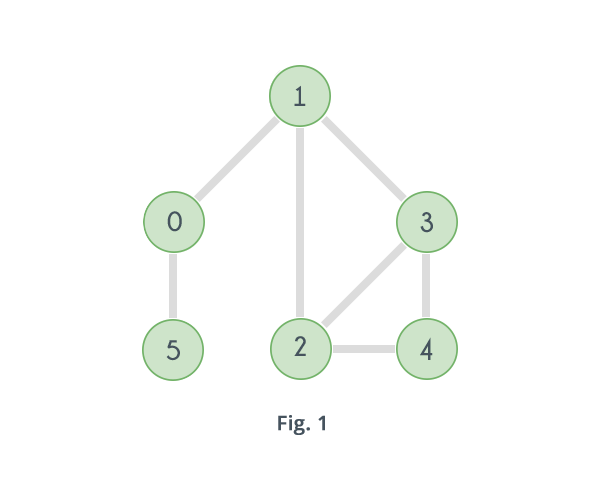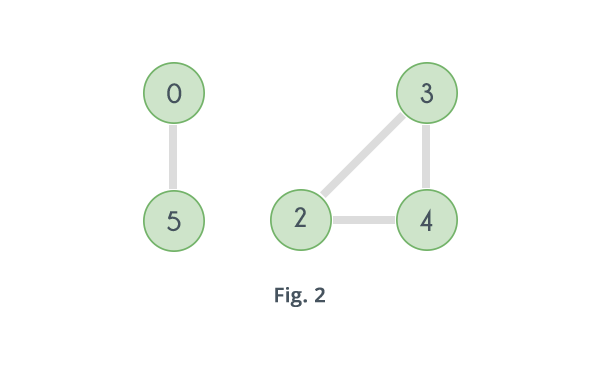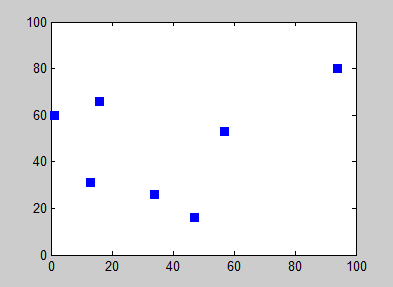In a graph, a vertex is called an articulation point if removing it and all the edges associated with it results in the increase of the number of connected components in the graph. For example consider the graph given in following figure.

If in the above graph, vertex 1 and all the edges associated with it, i.e. the edges 1-0, 1-2 and 1-3 are removed, there will be no path to reach any of the vertices 2, 3 or 4 from the vertices 0 and 5, that means the graph will split into two separate components. One consisting of the vertices 0 and 5 and another one consisting of the vertices 2, 3 and 4 as shown in the following figure.

Likewise removing the vertex 0 will disconnect the vertex 5 from all other vertices. Hence the given graph has two articulation points: 0 and 1. Articulation Points represents vulnerabilities in a network.
Program in C :
#include<stdio.h>
#include<stdlib.h>
int min(int a,int b)
{
return(a<b?a:b);
}
struct node
{
int val;
struct node* next;
};
struct graph
{
int v;
struct node** arr;
};
struct graph* createGraph(int v)
{
int i;
struct graph* temp =(struct graph*)malloc(sizeof(struct graph));
temp->v=v;
for(i=0;i<v;i++)
temp->arr=(int**)malloc(sizeof(int*)*v);
for(i=0;i<v;i++)
temp->arr[i]=NULL;
return temp;
}
void addEdge(struct graph* g,int u,int v)
{
struct node* temp =(struct node*)malloc(sizeof(struct node));
temp->val = v;
temp->next = g->arr[u];
g->arr[u] = temp;
}
void apUtil(struct graph * g,int node,int* isVisited,int* des,int* parent,int* low,int* ap)
{
struct node* temp=NULL;
static int time=0;
int children=0;
temp = g->arr[node];
isVisited[node]=1;
time++;
//printf("\nsetting time for %d",node);
des[node]=low[node]=time;
while(temp!=NULL)
{
if(!isVisited[temp->val])
{
children++;
parent[temp->val]=node;
apUtil(g,temp->val,isVisited,des,parent,low,ap);
low[node]= min(low[node],low[temp->val]);
if(parent[node]==-1 && children>1)
ap[node]=1;
if(parent[node]!=-1 && des[node]<=low[temp->val])
ap[node]=1;
}
else if(temp->val!=parent[node])
{
low[node]=min(low[node],des[temp->val]);
}
temp= temp->next;
}
//printf("%d",node);
}
void AP(struct graph* g)
{
int i;
int* des = (int*)malloc(sizeof(int)*g->v);
int* isVisited = (int*)malloc(sizeof(int)*g->v);
int* parent = (int*)malloc(sizeof(int)*g->v);
int* low = (int*)malloc(sizeof(int)*g->v);
int* ap = (int*)malloc(sizeof(int)*g->v);
for(i=0;i<g->v;i++)
{
isVisited[i]=0;
parent[i]=-1;
ap[i]=0;
}
for(i=0;i<g->v;i++)
{
if(isVisited[i]==0)
{
apUtil(g,i,isVisited,des,parent,low,ap);
}
}
printf("\n");
int flag=0;
printf("Searching Articulation points ....");
for(i=0;i<g->v;i++)
{
if(ap[i]==1)
{
flag=1;
printf("\nVertex : %d",i);
}
}
if(flag==0)
printf("\nNo Articulation point found.");
}
void main()
{
int size=0,edges=0,i,u,v;
printf("Please enter size of the graph : ");
scanf("%d",&size);
printf("\nPlease number of edges : ");
scanf("%d",&edges);
struct graph* g = createGraph(size);
for(i=0;i<edges;i++)
{
printf("\nEnter the edge %d\n",i);
scanf("%d %d",&u,&v);
addEdge(g,u,v);
}
AP(g);
} Output:

Please comment below in case of any problem found during running the code or any other doubts.


